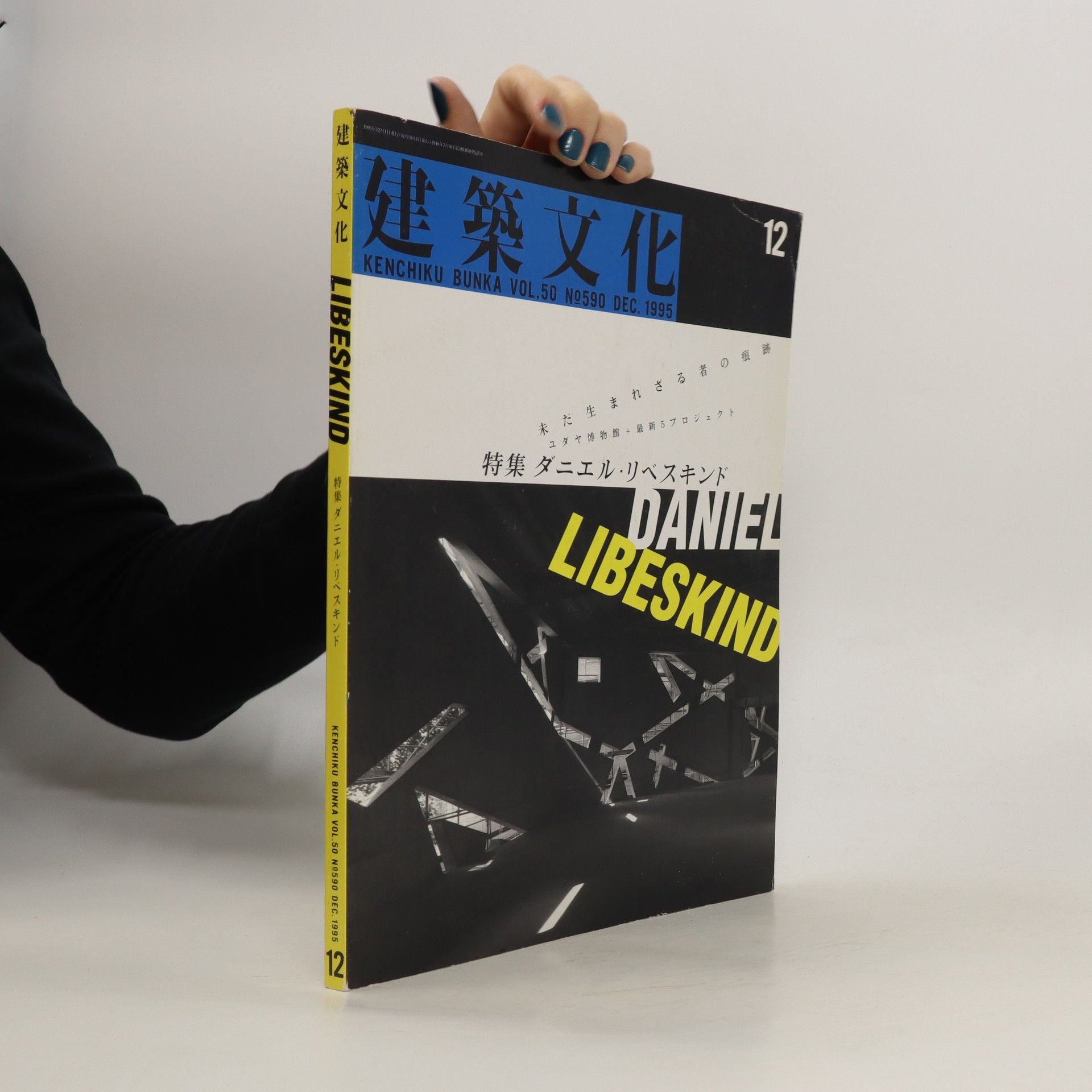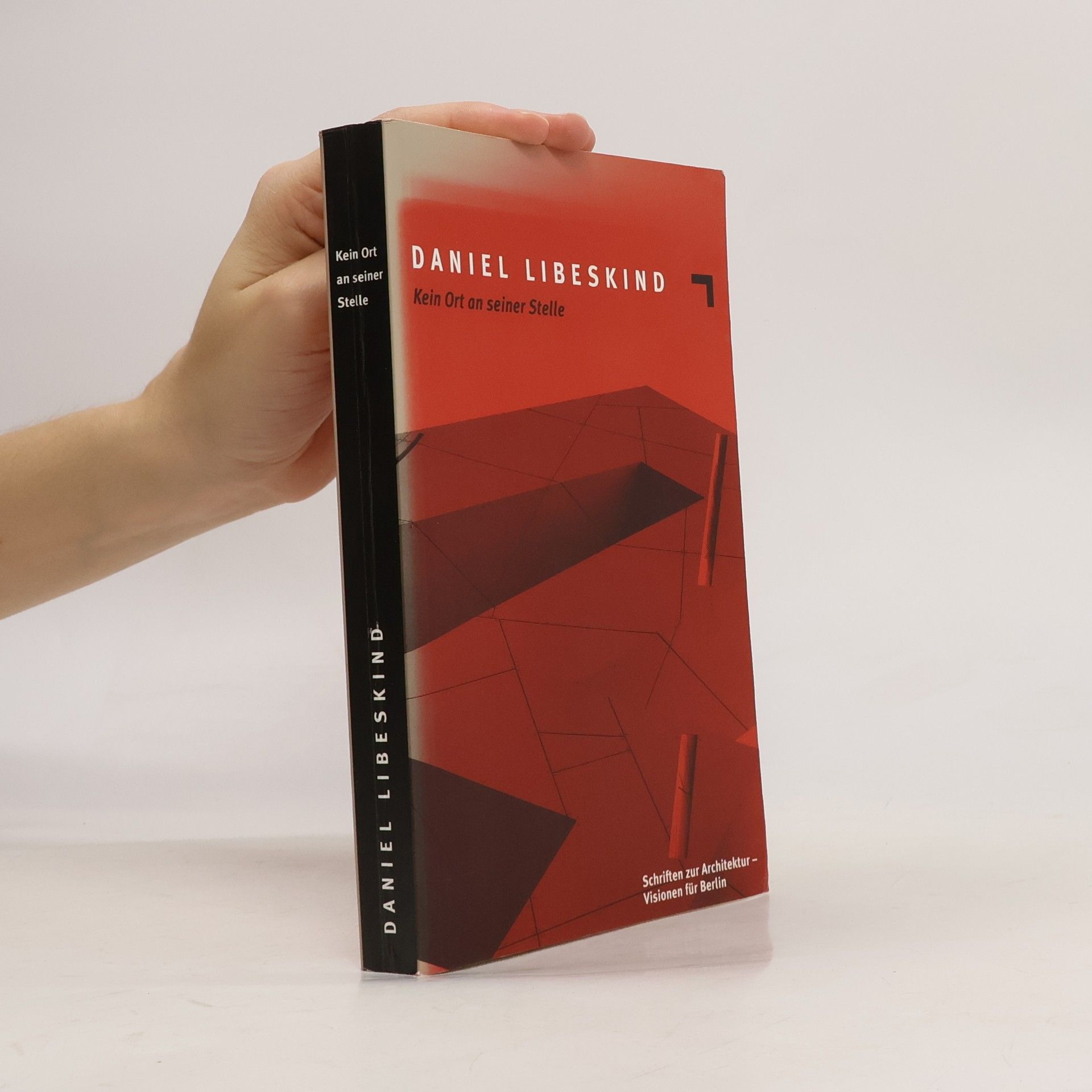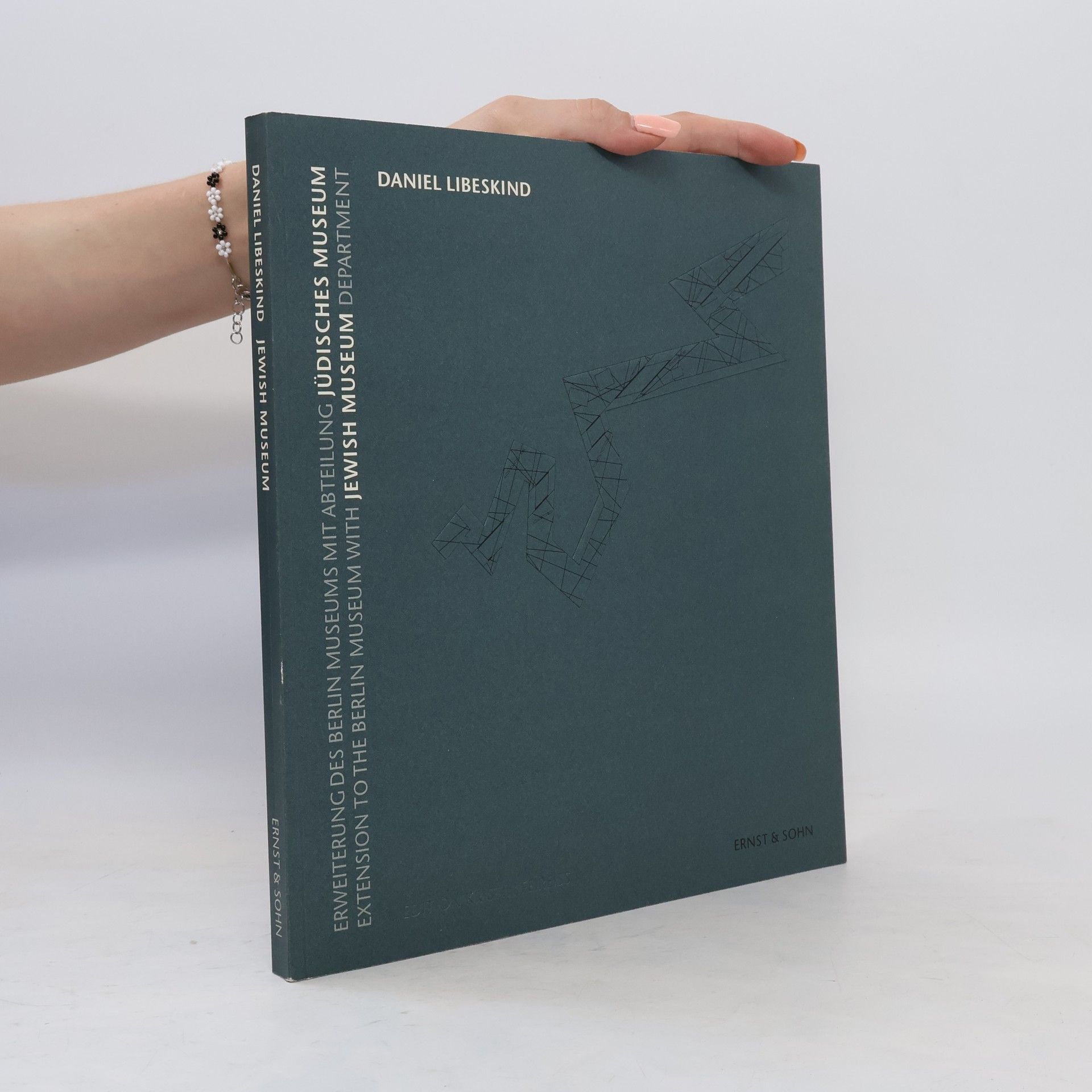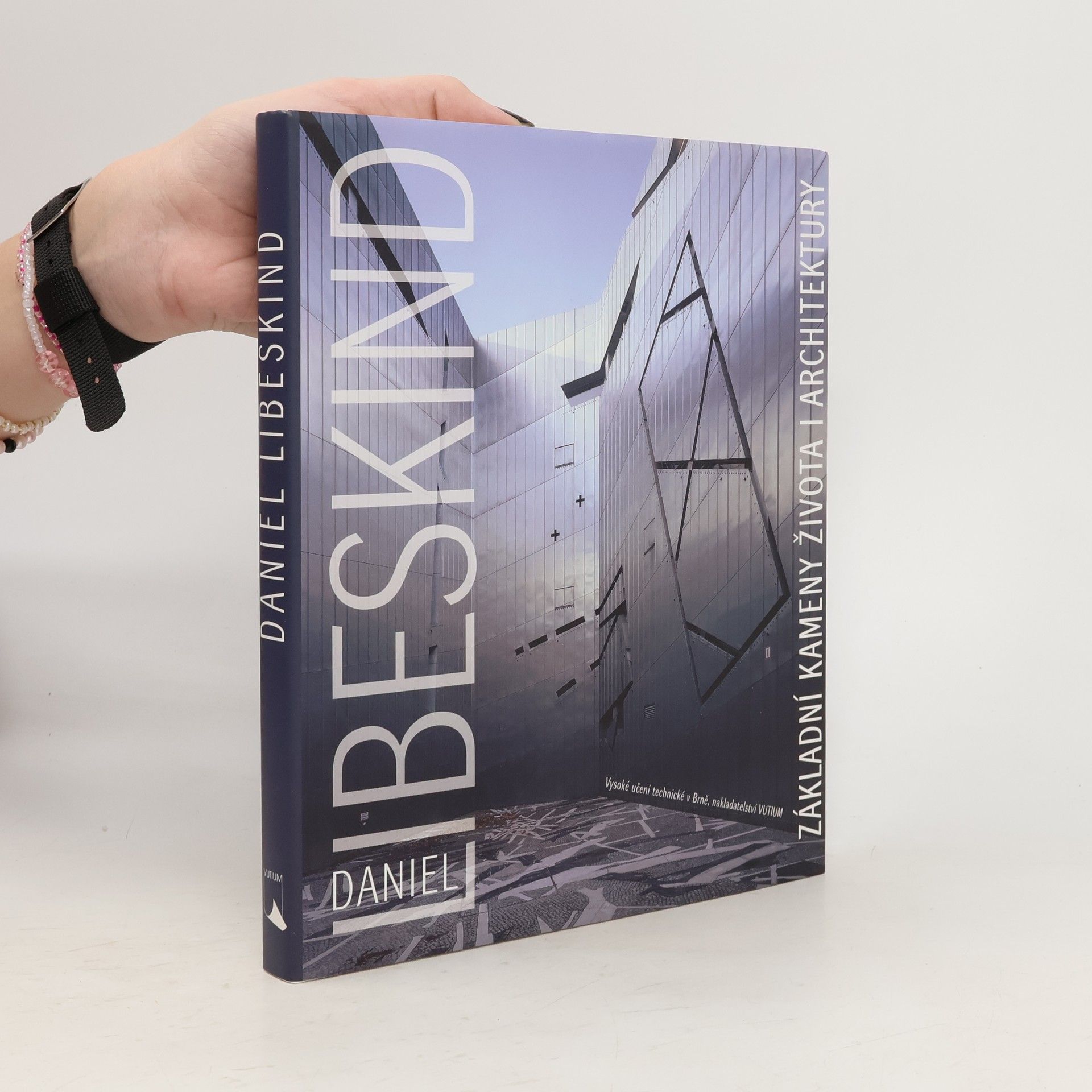A guide to the architecture of the Jewish Museum in Berlin, shedding light on its symbolism and the philosophy behind it which challenges the very way we regard architecture.
Daniel Libeskind Books
Daniel Libeskind is an internationally renowned architect whose practice involves designing commercial, residential, and cultural buildings globally. His Master Plan for rebuilding the World Trade Center site in New York City served as the foundational blueprint for the entire area, including the memorial and museum. Libeskind's structures are characterized by a dynamic and often deconstructivist aesthetic that explores the tension between history, memory, and architecture. His work is valued for its ability to create powerful emotional and symbolic spaces.




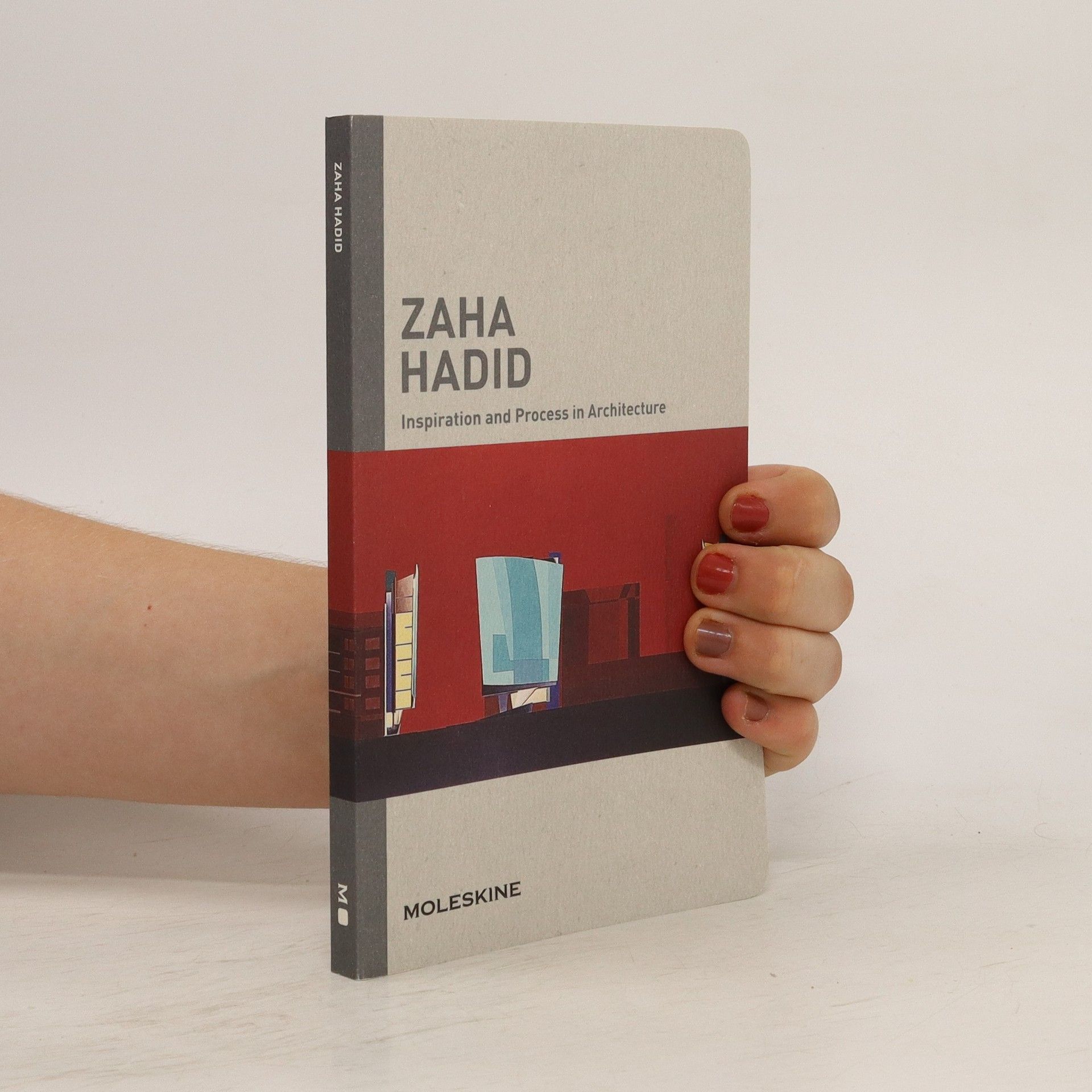


Daniel Libeskind: Inspiration and Process in Architecture
- 144 pages
- 6 hours of reading
Influenced by a deep commitment to music, philosophy, and literature, the world-renowned architect Daniel Libeskind chooses drawing to put his ideas and thoughts into practice, stating that architectural drawing is in itself a creative work. Drawings which constitute "architectural explorations" – from Micromegas to Chamber Works and Sonnets in Babylon – are presented in this book along with those on "real" architecture, documenting the creative process of prestigious projects such as the Jewish Museum in Berlin and the World Trade Center redevelopment in New York.
Zaha Hadid
- 144 pages
- 6 hours of reading
The mental space of painting, expressed in works that experiment with a new idea of existing urban panorama in search of visionary aesthetics. Zaha Hadid, winner of the Pritzker Architecture Prize in 2004, is world famous for projects such as the MAXXI in Rome, the Fire Station in Vitra or the Rosenthal Center for Contemporary Art in Cincinnati.
Jo Coenen: Inspiration and Process in Architecture
- 144 pages
- 6 hours of reading
Jo Coenen is a Dutch architect and urban planner. He studied architecture at the Eindhoven University of Technology (graduating in 1975), and later held professorships at TU Karlsruhe, Eindhoven University of Technology and Delft University of Technology. Between 2000 and 2004 Coenen was Chief Government Architect of the Netherlands. In 1995 he won the BNA Kubus award. He is honorary member of the Association of German Architects.
Alles Kunst?
- 254 pages
- 9 hours of reading
Jan Philipp Reemtsma, geboren 1952, ist Vorstand des Hamburger Instituts für Sozialforschung und der Arno Schmidt Stiftung, Mitherausgeber der Bargfelder Ausgabe der Werke Arno Schmidts, der «Politischen Schriften» von Christoph Martin Wieland und hat einen Lehrauftrag an der Universität Hamburg. Der promovierte Philologe veröffentlichte «Falun. Reden und Aufsätze» (1992), «Das Buch vom Ich. Christoph MartinWielands ‹Aristipp und einige seiner Zeitgenossen›» (1993) und «Mehr als ein Champion. Über den Stil des BoxersMuhammad Ali» (1997). Ingo Metzmacher, geboren 1957 in Hannover, gab 1987 an der Frankfurter Oper mit Mozarts «Le nozze di Figaro» sein Debüt als Operndirigent. Von dort aus führte ihn sein Weg an viele der großen Opernhäuser dieser Welt. Von 1997 bis 2005 leitete er die Hamburgische Staatsoper als Generalmusikdirektor, danach war er Chefdirigent der Nederlandse Opera in Amsterdam. Seit 2007 ist er Chefdirigent und künstlerischer Leiter des Deutschen Symphonie-Orchesters Berlin. 2005 erschien sein viel beachtetes Buch «Keine Angst vor neuen Tönen».
Das bewegte Leben des weltbekannten Architekten - und zugleich ein Insiderbericht über Tücken, Dramen und Skandale bei den großen Bauprojekten Libeskinds. Wortgewaltig, anekdotenreich und authentisch verändert Libeskind unseren Blick auf Architektur und die Welt an sich. Stararchitekt Daniel Libeskind, der Schöpfer des Jüdischen Museums in Berlin, schildert das Abenteuer seines Lebens und erläutert seine ursprünglichen Pläne für den Wiederaufbau des World Trade Center in New York. „Im Gegensatz zur landläufigen Meinung sind Bauwerke keineswegs leblose Objekte. Sie leben und atmen und besitzen genau wie wir Menschen ein Inneres und ein Äußeres, einen Körper und eine Seele. Wie schafft man es also, ein Gebäude zu entwerfen, das singen kann? Ein Gebäude, das Charakter, Menschlichkeit und Schönheit ausstrahlt?“ (Daniel Libeskind)
Základní kameny života i architektury
- 254 pages
- 9 hours of reading
Zčásti autobiografií a zčásti přemýšlením nad architekturou a jejím působením na člověka, osvětluje kořeny autorova jedinečného přístupu k veřejnému prostoru. Jazykem jiskřícím vtipem a erudicí Daniel Libeskind vysvětluje, jak se jeho individuální životní zkušenost promítla do jeho pojetí největąí a nejvýznamnější architektonické zakázky dvacátého prvního století: koncepčního řešení zástavby areálu Světového obchodního centra. Kniha plná vitality, humoru a jiskrných vizí nabízí čtenářům nový pohled na architekturu i na svět jako takový.
